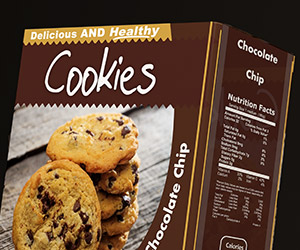PCC challenges "healthy" label claims
by Nick Rose, M.S.
This article was originally published in July 2017

Earlier this year, the Food and Drug Administration (FDA) accepted comments on what the definition of “healthy” should be for food labels. We asked PCC shoppers to weigh in, and we included their input in our own remarks to the FDA. Here’s an edited excerpt of our comments.
PCC Natural Markets’ commitment to honest labeling that doesn’t deceive shoppers is fundamental to our mission and values. We believe the current criteria for what constitutes a healthy food is severely out of date and does not reflect the current available science and understanding of nutrition.
For instance, under the current definition of “healthy,” the following foods do not meet the criteria, despite being endorsed by the American Heart Association and/or the 2015 Dietary Guidelines for Americans:
- Almonds, avocados, olive oil, flaxseed (because of fat)
- Eggs, seafood (because of cholesterol)
- Salmon, chicken breast (because of fat)
- Milk, yogurt, extra-lean ground beef (because of saturated fat)
- Water (no vitamins, fiber, or protein)
Why ban “healthy” label?
Rather than creating a new definition for labeling foods healthy, we believe the best solution is to ban the use of “healthy” on food labels. Here’s why:
1. The criteria that make foods healthy varies across categories of foods. It’s difficult, if not impossible, to create a one-size-fits-all criteria for “healthy” that accurately describes the healthiest choices within all food groups.
For instance, beverages are healthier when lower in added sugar but chips and pretzels are healthier when lower in sodium.
2. The healthiest foods do not have labels. The “healthy” label currently is used only for packaged/processed foods but the healthiest foods often are whole foods that are not packaged.
Labeling orange juice as healthy, but not oranges, adds more confusion to the marketplace. The U.S. Department of Agriculture’s MyPlate model emphasizes that “half your plate should be fruits and vegetables,” but calling other foods healthy may encourage people, erroneously, to think packaged foods may be equivalent in nutritional value to fresh produce. It confuses and even contradicts the official goal to encourage consumption of more fresh produce.
3. Consumers should learn what is healthy from nutrition professionals. Shoppers shouldn’t rely on or trust food manufacturers (with a profit incentive) to tell consumers what foods are healthy.
4. “Healthy” claims are unnecessary. Shoppers already have access to the nutrition facts panel and the list of ingredients. Any criteria the FDA plans to use in allowing “healthy” claims already is found on labels for consumers to make their own decisions based on their specific dietary needs and preferences.
5. “Healthy” is relative. Almost any food can be considered healthier than another food. Juice is healthier than soda but water is healthier than juice. Popcorn is healthier than cookies but fruit is healthier than popcorn. Based on this logic, almost any food could be considered a healthy choice.
Ironically, processed foods would be labeled healthy, but they’re less healthy choices than whole foods such as unprocessed vegetables, whole intact grains, and fresh meat that wouldn’t be labeled healthy.
6. Portion sizes impact healthfulness. A food may be considered healthy, based on the serving size, but if consumed in larger portions, it may no longer be healthy. For example, peanut butter is healthy when consumed in moderation, but if consumed in excess, it’s no longer healthy because of excessive calories.
7. Everyone has different dietary needs. Whole wheat bread can be healthy for one person but harmful to someone with celiac disease. Grapefruit juice is healthy for most people but deadly to people taking certain prescription drugs. Red wine is healthy in moderation but harmful in excess.
8. Nutrition science changes. As new research is conducted, FDA’s definition of “healthy” will need to be updated continually. Today’s “healthy” definition reflects the state of nutrition science in the 1990s, with emphasis on low-fat and cholesterol-free foods.
A modern definition would emphasize foods low in added sugars, sodium and refined grains. As new research is conducted and the science changes, it’s possible other nutritional concerns will emerge that will inform our understanding of what constitutes “healthy.” Will FDA be able to update the criteria for “healthy” to keep pace?
We’ll keep you posted on what, if any, progress FDA makes on “healthy” label claims in the coming months.
Nick Rose, M.S. is a nutrition educator at PCC Natural Markets.
